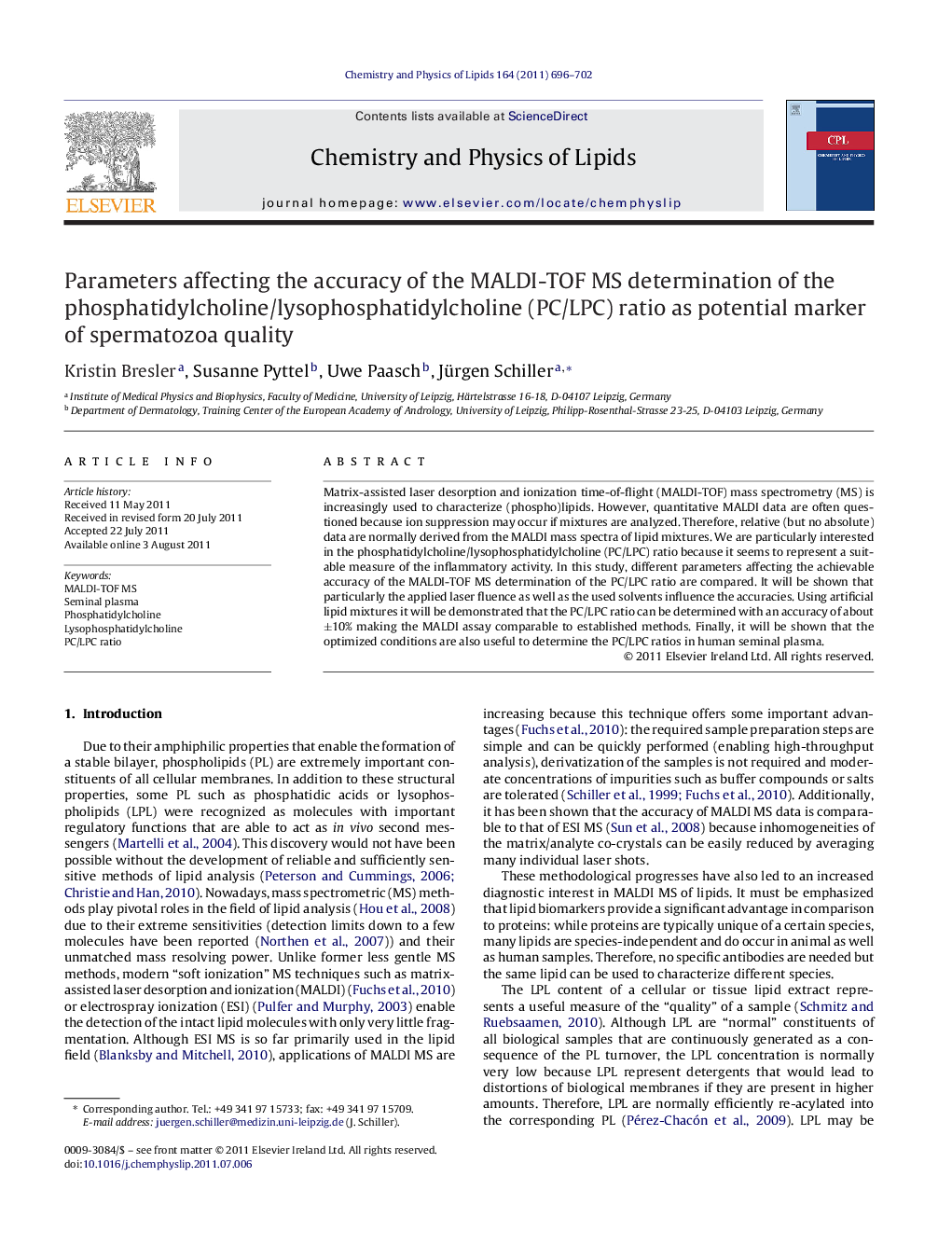| Article ID | Journal | Published Year | Pages | File Type |
|---|---|---|---|---|
| 1252051 | Chemistry and Physics of Lipids | 2011 | 7 Pages |
Matrix-assisted laser desorption and ionization time-of-flight (MALDI-TOF) mass spectrometry (MS) is increasingly used to characterize (phospho)lipids. However, quantitative MALDI data are often questioned because ion suppression may occur if mixtures are analyzed. Therefore, relative (but no absolute) data are normally derived from the MALDI mass spectra of lipid mixtures. We are particularly interested in the phosphatidylcholine/lysophosphatidylcholine (PC/LPC) ratio because it seems to represent a suitable measure of the inflammatory activity. In this study, different parameters affecting the achievable accuracy of the MALDI-TOF MS determination of the PC/LPC ratio are compared. It will be shown that particularly the applied laser fluence as well as the used solvents influence the accuracies. Using artificial lipid mixtures it will be demonstrated that the PC/LPC ratio can be determined with an accuracy of about ±10% making the MALDI assay comparable to established methods. Finally, it will be shown that the optimized conditions are also useful to determine the PC/LPC ratios in human seminal plasma.
► The concentration of lysophosphatidylcholine (LPC) increases during inflammation. ► MALDI-TOF MS is useful to determine the PC/LPC ratios in biological samples. ► Different parameters affecting the quality of MALDI mass spectra were evaluated. ► Laser fluence, reflector voltage, matrix and solvents determine data accuracies. ► Seminal plasma was investigated to model the effect of a complex biological “matrix”.
